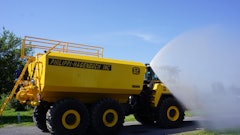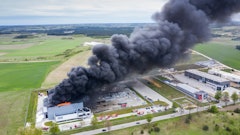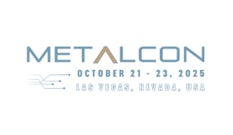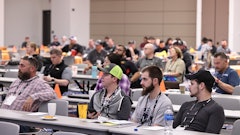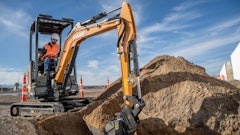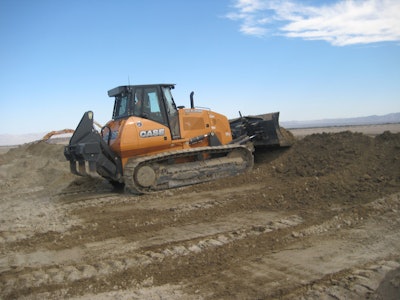
The Salton Sea, a large, shallow saline lake in the desert of Southern California, was formed when an irrigation canal carrying water from the Colorado River broke in 1905. By the 1960s the lake had become a vacation paradise filled with resorts and hotels, and at the time was referred to by some developers as “the American Riviera.”
During the 1980s and 1990s the lake was home to one of the greatest sport fisheries in the world. However, because it has served as a drainage sump for over 100 years, the Sea has accumulated excessive nutrients and other chemical compounds, primarily in the form of hydrogen sulfide, ammonia and salt. The increasing nutrient and salinity levels are killing the Sea, as the water is becoming too salty for most life forms.
Since its initial flooding, the Salton Sea water level had been maintained by run-off from nearby agricultural communities. However, modern water conservation practices have reduced run-off significantly, and the sea is drying up. As the shoreline recedes, it exposes thousands of acres of lakebed. Winds sweeping the exposed shorelines kick up harmful dust, contributing to air-quality problems for people and wildlife of the region.
The Sonny Bono Salton Sea National Wildlife Refuge
The Sonny Bono Salton Sea National Wildlife Refuge was established in 1930. Most of its 37,600 acres are within the currently flooded portions of the Salton Sea. The refuge is home to the greatest diversity of bird species of any refuge in the U.S., although the sea’s increasing salinity threatens that status.
Drying has exposed about 2,000 acres of the Bono Refuge. To help preserve bird habitat in the refuge, the U.S. Fish & Wildlife Service (Service) and Imperial Irrigation District (IID) are restoring Red Hill Bay, a dried bay on the Southern edge of the sea. Funding for much-needed mitigation projects has been hard to come by, but an unprecedented project recently took the first small step toward demonstrating how restoration can be funded.
Red Hill Bay Restoration Project
The U.S. Fish and Wildlife Service partnered with California’s Imperial Irrigation District to build a series of berms and canals that will cover approximately 530 acres of dry lakebed with water from the sea and the nearby Alamo River.
The challenging project is proving to be a worthwhile task. Much is being learned about how to work in such difficult conditions, and those lessons are laying the foundation for future work. The experience is vital, as the clock is ticking for residents of Imperial County—who already exhibit the state’s highest rates of childhood asthma.
Team Rubicon and Case
Team Rubicon—a veteran-led disaster relief organization that seeks to help veterans transition from military to civilian life—has partnered with Fish and Wildlife to provide heavy-equipment safety training and operating time to Team Rubicon volunteers. The work enhances the capabilities of Team Rubicon disaster response teams and contributes volunteer service hours towards much-needed mitigation and restoration projects all over the U.S.
A key component is Team Rubicon’s partnership with Case Construction Equipment, which provides both training and equipment through their dealer network. Case provided several excavators, dozers and training support to assist Team Rubicon in their efforts at Red Hill Bay.
Tasked with constructing the primary containment berm for the massive reclamation project, the U.S. Fish and Wildlife Service, Team Rubicon and Case set to work in the autumn of 2016.
U.S. Fish and Wildlife
Team Rubicon played a vital role in beginning the Red Hill Bay Restoration Project. “Team Rubicon has performed the most difficult part of constructing the primary containment berm for our 530-acre habitat reclamation project,” says Chris Schoneman, refuge project leader for Fish and Wildlife. “Team Rubicon excavated approximately 2-ft. of sand across the 4,000-ft. long and 70-ft. wide berm footprint (20,740 cu. yd.) to allow the clay subsoil to dry for needed compaction.”
Most of this technical work needed to be performed on wooden mats, as the subsoil was initially too wet to operate the excavators on directly. The waterline is just inches below the dusty surface of the lakebed. “This was technically a very challenging working environment and Team Rubicon completed the task with great efficiency,” Schoneman explains. “At a typical cost of $4 per cubic yard to excavate soil, this effort likely saved the refuge $82,960. The project budget has no flexibility to contract major work components out, so this has resulted in direct labor savings to the Refuge, which already manages 1,800 acres of intensively managed habitat with minimal staff.
“The overall benefit of this project, when completed, will be a restored portion of the Salton Sea that the community can visit and envisage a brighter future for,” says Schoneman, who began working with U.S. Fish and Wildlife Service in 1988, and has managed the Sonny Bono Salton Sea National Wildlife Refuge since 2004. “Migratory birds will visit the area to rest and feed during their long migration and people will have an opportunity to experience nature. The restoration project will also stop harmful dust from becoming airborne on windy days and causing negative health impacts to the residents of Imperial County.”
Imperial Irrigation District
Another key figure in this project is Graeme Donaldson, Imperial Irrigation District’s program manager for the Salton Sea Initiative. A marine engineering-electrical engineer with extensive experience in renewable energy development and project management, Donaldson directs IID and Imperial County’s Salton Sea Restoration and Renewable Energy Initiative.
Donaldson’s role includes advancing initiatives at the sea, such as using IID-owned land for renewable energy projects that will maximize the district’s assets and serve as ground cover for the exposed lakebed. He collaborates with Imperial County to integrate the work product of both agencies at the sea and develop an IID-land-use plan that will deliver sustained environmental and economic value to the region.
“This is the first of many projects that has come to reality. This is a great opportunity for us to lead by example,” says Donaldson. “IID and the U.S. Fish and Wildlife Service are working together—you’ve got a public municipality and a federal agency working together. People might see that and think that’s a strange combination, but it works. We’ve created an incredible team.”
“This area is really the breadbasket of Southern California,” Donaldson continues. “It’s a very productive agricultural region, and protecting our water resources is very important to us here. With the overall synergy of this project, it sets the tone for the State of California and their obligations for restoration efforts like this.”
A Brighter Future
Having overcome many challenges, the first phase of this key conservation and public-health improvement project has been a resounding success. The initial 530-acre wetland restoration project at Red Hill Bay—the first of many—is scheduled to be completed in 2017. This work will restore wetlands for migratory birds and other wildlife and will improve air quality for the people of Imperial County’s agricultural communities and beyond. This project truly is a testimony to what can be achieved when partners work together for the common good.
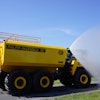


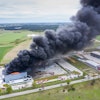
![[VIDEO] Caterpillar Shows How Virtually Reality Can Improve Field Diagnostics](https://img.forconstructionpros.com/files/base/acbm/fcp/image/2016/06/default.5764340cc06b3.png?auto=format%2Ccompress&fit=crop&h=167&q=70&w=250)



